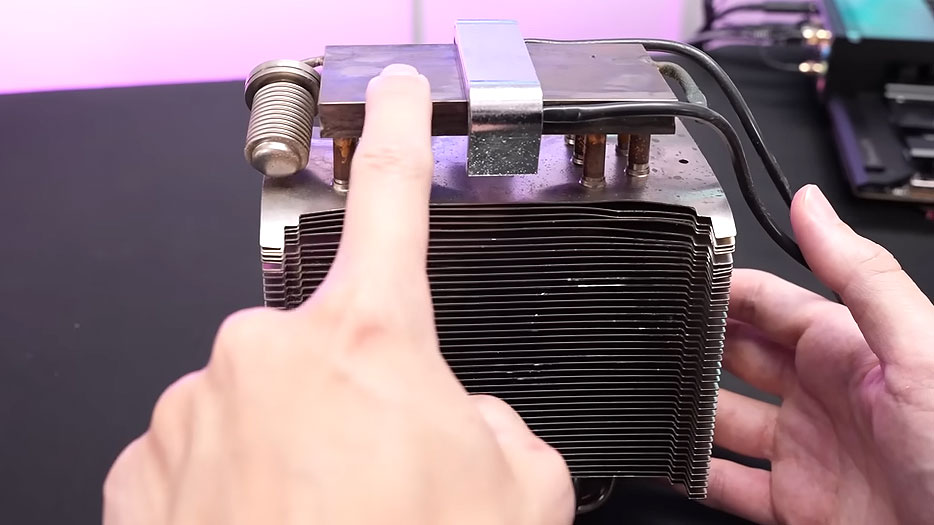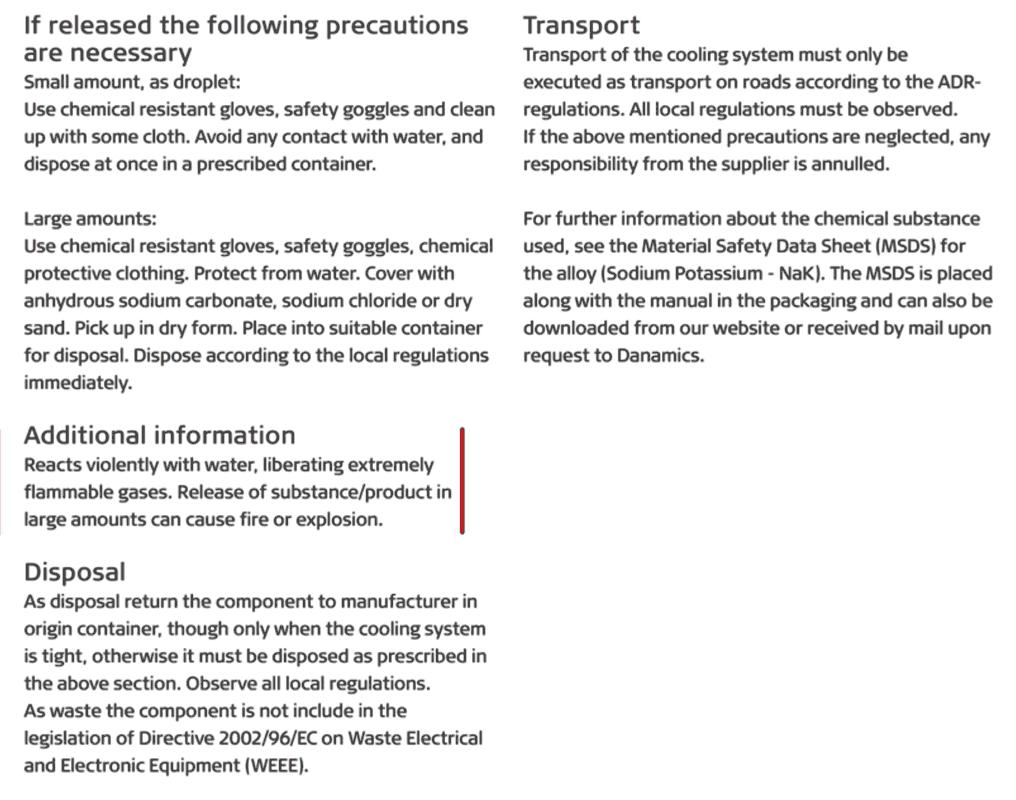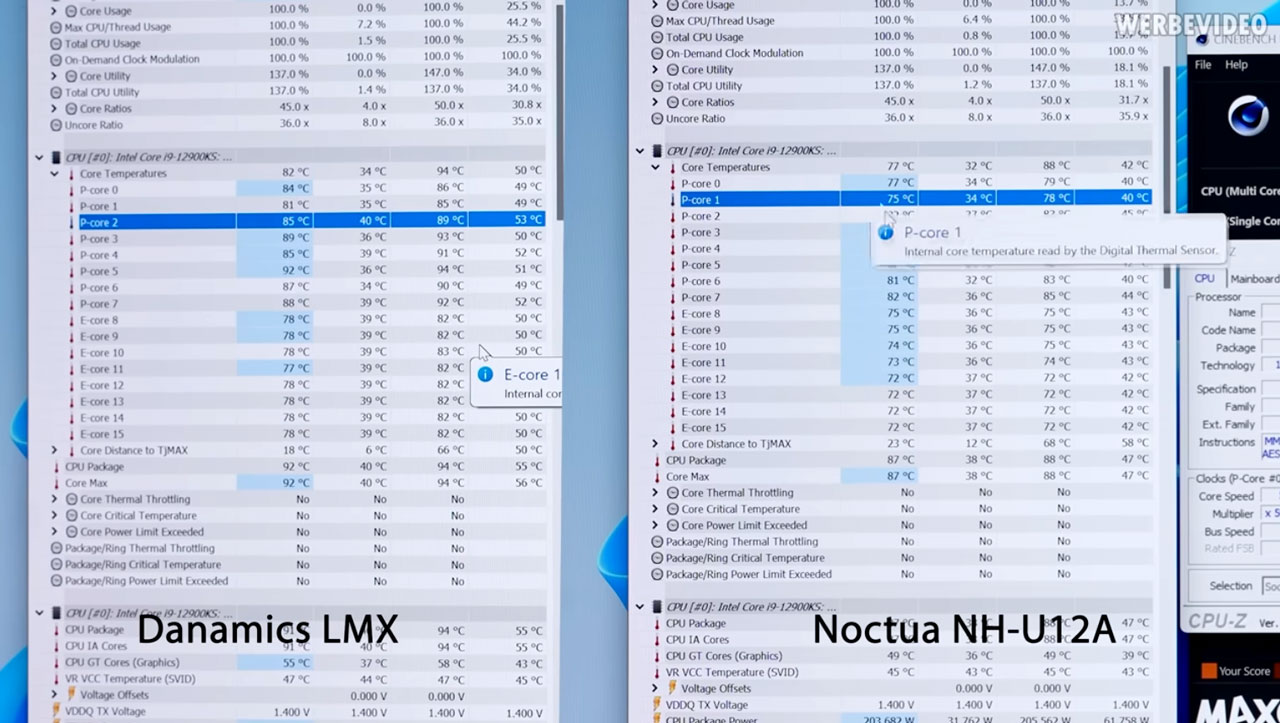Liquid Metal Air Cooler Dubbed 'Most Dangerous Cooler Ever Made'

What is claimed to be "probably the most dangerous CPU cooler ever made," has been analyzed by extreme overclocking expert der8auer, on his YouTube channel. The danger with the cooler under the spotlight is that its ordinary-looking heatpipes are actually filled with liquid metal. However, this isn't the gallium-indium liquid metal der8auer often promotes as a great thermal interface material. Instead, the liquid metal in this CPU air cooler is an alloy of two highly reactive alkali metals: sodium and potassium.
The ~2010 vintage Danamics LMX Liquid Metal CPU Cooler is said by der8auer to have been an attempt to address the perceived underperformance of traditional heatpipes. The tech team at Danamix started testing CPU air coolers with liquid metal coursing through their veins in 2008 or earlier, but the LMX model you see pictured was being distributed in limited numbers in early 2010.
Der8auer checked some of the physical properties of sodium-potassium alloys to try and uncover the reasoning behind building the Danamix LMX. His research suggests the liquid alloy material's heat capacity is only a quarter that of water, but its thermal conductivity is a lot better, at about 30x that of water. The YouTuber reckoned that the second metric looks impressive, but isn't a useful quality for a liquid inside a heatpipe.

A complication of the Danamix LMX design is the requirement of a pump. Der8auer took the cover off the top-mounted pump and you can see it clearly in the image above. This is a neodymium electromagnetic pump and it is powered by some rather thick cables supplying 30 amps. To touch the cables were quite warm, estimated to be between 40 to 50 degrees Celsius.
The practical value of a technology should be observable by testing. Thus, der8auer set up a couple of test runs to compare the Danamix LMX to a Noctua NH-U12A air cooler, both using the 120mm fan from the Noctua.
In gaming comparisons, it was hard to compare the temperatures as they changed rapidly with the different game scenes and intensity of action. Cinebench testing gave a clearer comparison, and the Noctua was observed to be five to six degrees Celsius cooler overall. Der8auer commented that considering the age difference in the coolers, and the Noctua's high standing in 2023, the LMX didn't do too badly. However, the ordinary heatpipe "was definitely superior" to the sodium-potassium alloy-filled rival in his judgment.
We don't really know whether the uninspiring performance of the LMX was instrumental to Danamix's demise. However, the company would go into liquidation later in 2010. It is thought that the only LMX coolers around are a mix of prototypes and samples that were sent off to reviewers and testers.
Get Tom's Hardware's best news and in-depth reviews, straight to your inbox.

Der8auer concluded the video by musing about the possibility of a truckload of LMX coolers becoming damaged in a road traffic accident, and the calamity that might ensue... We should probably be thankful that never happened, partly because the cooler didn't make it to the mass production phase.

Mark Tyson is a news editor at Tom's Hardware. He enjoys covering the full breadth of PC tech; from business and semiconductor design to products approaching the edge of reason.
-
Amdlova That cooler is made for intel cpu... when you see the 30amps of pure power for cooling the cpu will see the efficiency of intel 14nm ++++ Ops 10nm+++ or other name Intel rives in right moment and opportunity. That magnets is used in maglevs or ressonance machines. You can see the flow of electrons colliding. Don't worry about your graphcis coil wine, this ressonant device will draw all your power making the system complete silentReply -
bit_user I'm guessing this works like an AIO liquid cooler, except that the radiator is also attached to the base. The fact that it needs a pump (and what a power-hungry one!) tells me the copper pipes are merely conduits rather than proper heat pipes. The difference is that a heat pipe works via phase-change (i.e. boiling the working fluid at one spot, and re-condensing it elsewhere).Reply
If they used this fluid in a water cooling setup, it should indeed be more effective. However, using it in place of regular heat pipes seems quite dubious, as the thermal conductivity of heat pipes is even higher than solid copper! -
rluker5 I didn't know that you could melt sodium and potassium by rubbing them together like indium and gallium. Now I want to do that with some from my collection. The stuff just corrodes away on its own otherwise (at least in mineral oil), unless you store it in a glass ampule with a noble gas.Reply
I imagine these coolers have a bunch of corrosion/reaction residue on the liquid/pipe interface that hurts thermal transfer. I'm surprised it didn't turn into junk in its lengthy storage. Maybe it was stored below its freezing point.
At least they didn't use a cesium-potassium-sodium alloy. -
jp7189 I didn't know Na + K makes a liquid at room temperature. For those interested, I looked it up: "...mixture consists of 77% potassium and 23% sodium by mass (NaK-77), and it is a liquid from −12.6 to 785 °C (9.3 to 1,445.0 °F), and has a density of 0.866 g/cm3 at 21 °C (70 °F) and 0.855 g/cm3 at 100 °C (212 °F), making it less dense than water."Reply -
GhostGreyWolf Something in my head makes me think the Soviet Union experimented with sodium potassium for cooling submarine nuclear reactors. They did try it with lead-bismuth and it didn’t go well.Reply
Japan had one sodium-potassium reactor…yeaahhh.
https://en.m.wikipedia.org/wiki/Monju_Nuclear_Power_Plant -
t3t4 So 🧂 and a 🍌 make a phase exchange cooler. When you mix salt with your banana (sodium and potassium) it is a corrosive thing from the get go, a dangerous thing overtime due to it's corrosive nature. How well could it work? I don't know. But it is potentially very dangerous to a PC.Reply
